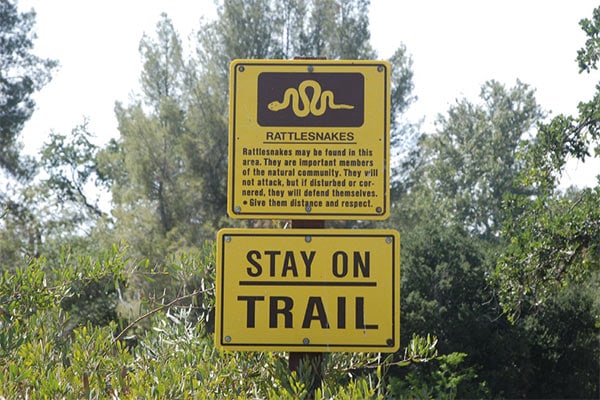By Dr. Angela Gaeto, DVM, of the Helen Woodward Animal Center community in San Diego County.
• Rattlesnakes are the only native venomous snake species to California.
• Rattlesnakes are more prevalent in the spring and summer.
• They do have a rattle on their tail that they shake to ward off danger, so if you hear a "rattle" and see a beige and white snake, back away slowly.
• The best way to avoid rattlesnakes is to keep to well-cleared fire roads and keep your dog on a leash.
• Rattlesnake vaccine is available. However, it is not 100% effective. If your vaccinated dog gets bitten, you need to get to a vet ASAP.
• Initial symptoms include two small puncture wounds, swelling at the site of the bite and pain. About two hours later shock, weakness, muscle tremors and necrosis of tissue can set in.
• If you think your dog was bitten, keep him calm. Carry him to the car if you can and get to the vet ASAP.
• The effects of a bite may be extreme, depending on where your dog is bitten, and how much venom was injected into him.
• Do not try to catch the snake. Do not try to suck the poison out of the wound. Just get to the veterinarian.
• Treatment can include everything from the basic supportive care of IV fluids, anticonvulsants, and antibiotics, to full blown surgery.
• Rattlesnakes can swim, so watch out for wiggly "sticks" before you send Fido in for a swim.
Photo Credit: Kent Kanouse (CC)







